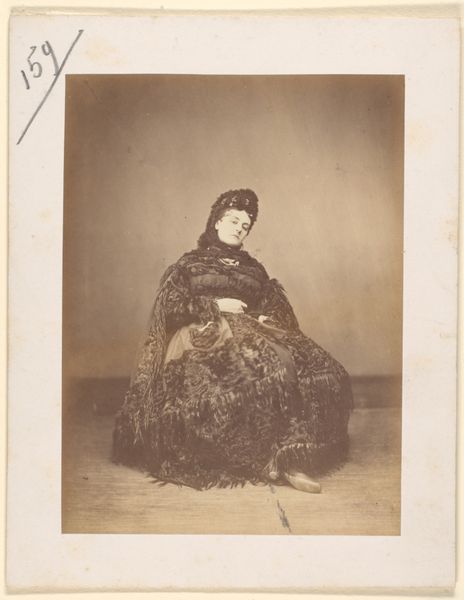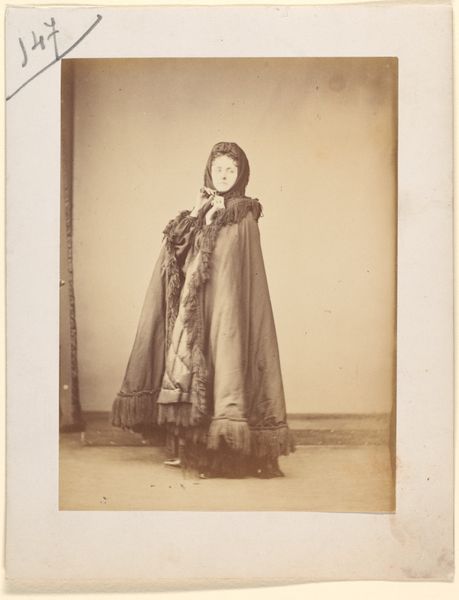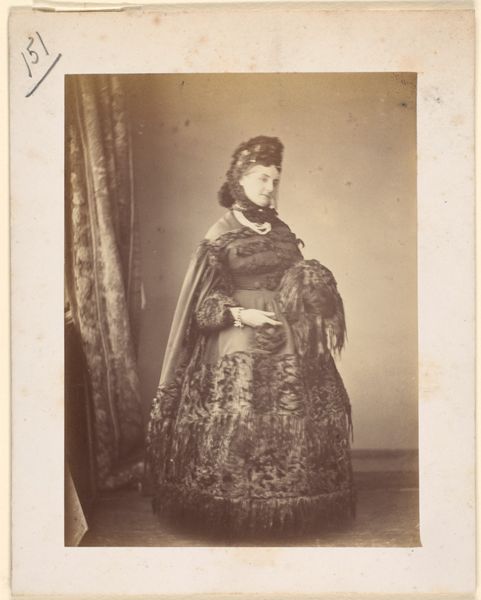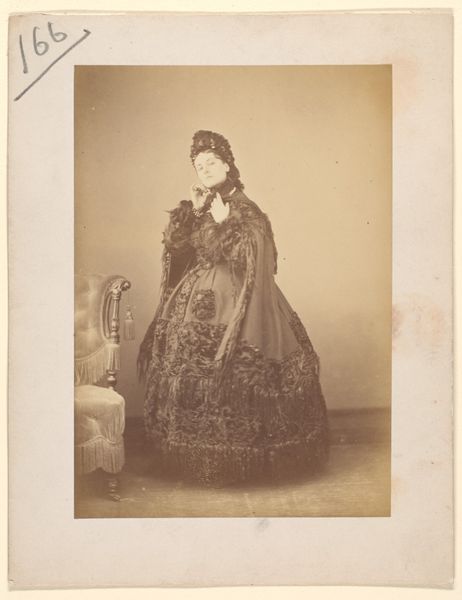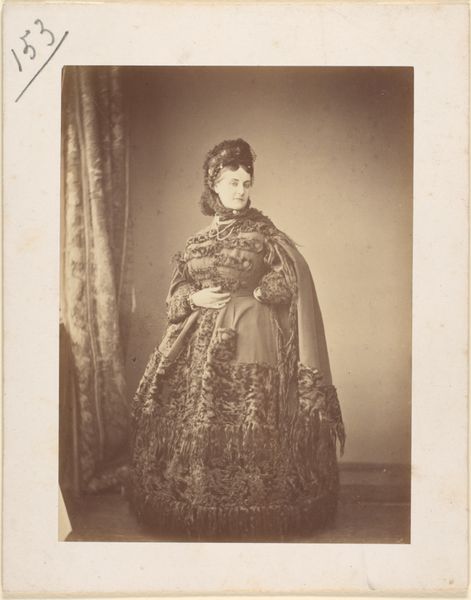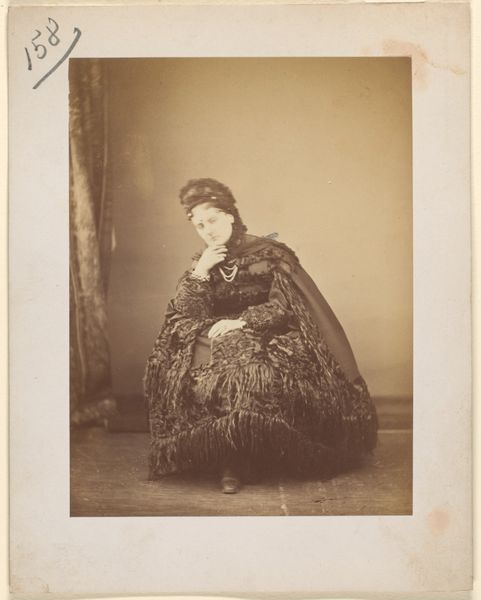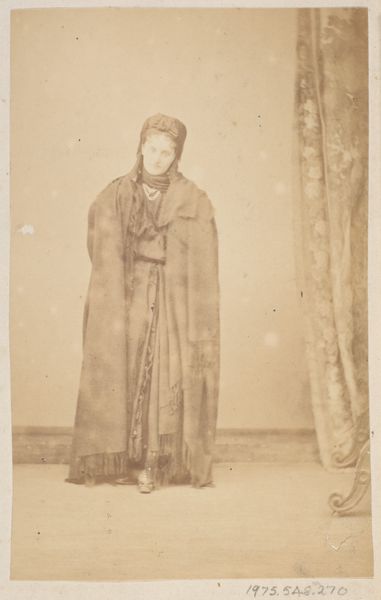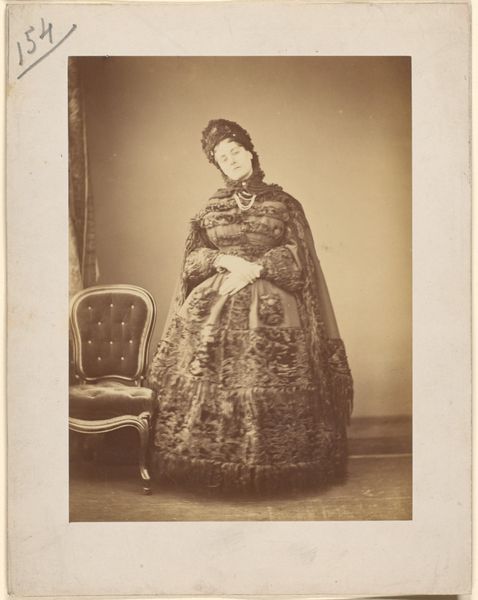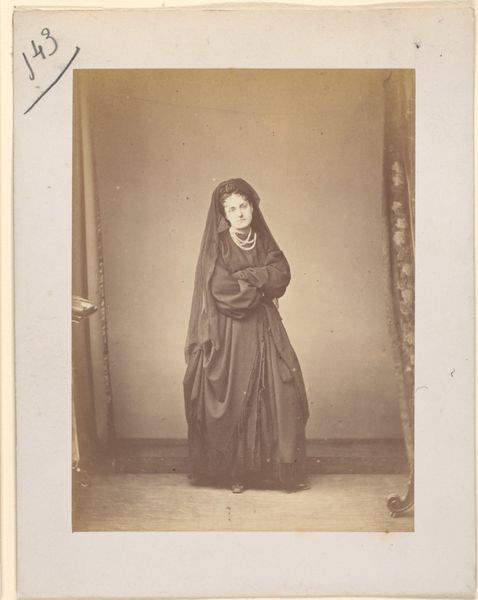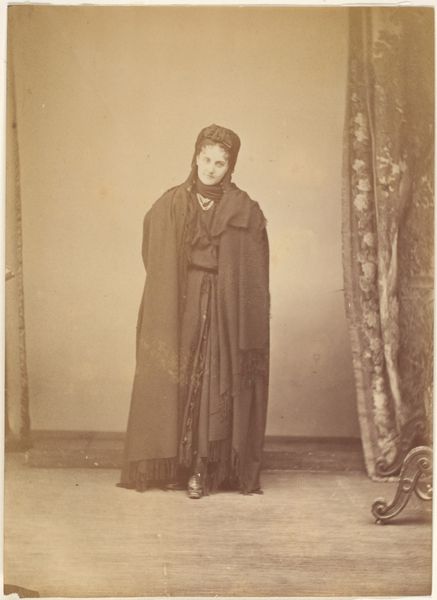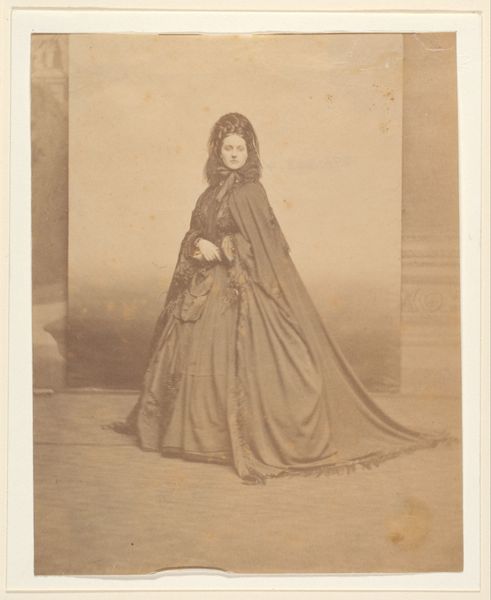
photography
#
portrait
#
photography
Copyright: Public Domain
Curator: Good afternoon, everyone. We are standing before "Le Caracul," also known as "L'Astrakhan," a portrait captured in the 1860s by the French photographer Pierre-Louis Pierson. This is photography from a very unique perspective! Editor: My first impression? Layers upon layers. It's opulent and somewhat…suffocating. All that dark, rippling fur…it’s both luxurious and imposing. Curator: Pierson really focuses our attention on the materiality, doesn't he? He masterfully manipulates light and shadow to emphasize the textures of the Astrakhan fur. We see not just a garment, but a construction, a visual interplay of dense patterns. He doesn't want us to know the human in the portrait beyond this almost claustrophobic outfit. Editor: Absolutely. The semiotics are inescapable: This is about wealth and status. But I wonder what lies beneath all of this, and I think that maybe Pierson himself asks this, by not unveiling the true personality of the sitter. Is this sitter playing the role of opulence, or expressing her truest desires of identity. She almost appears lost in it, right? The gaze feels almost indifferent. Curator: Perhaps that sense of detachment you observe is part of its allure. We’re distanced, analyzing a representation. Do you think this allows us, and Pierre himself, to truly see something that the society fails to recognize or even attempts to conceal? The rigid lines in the upper zone with that soft darkness on the lower levels of the piece contrast greatly with that single foot that pops underneath the coat. Editor: Good point! I almost didn't notice the exposed feet at first because it is almost erased with a kind of brownish shadow play that helps her stay unnoticed. What does it do to the image beyond shocking the conservative audience for its time? It humanizes the sitter! I see an almost desperate expression. Maybe that look is part of Pierre-Louis' perspective. Curator: Yes! It also echoes Pierson's career-long project of collaboration with the Countess de Castiglione in which fashion, theatricality, and subversion mixed so wonderfully. It makes you wonder. Editor: Indeed. After this brief viewing, I feel more interested in the identity of the Countess, the meaning of shadows and darkness, and the purpose that photography held at that time.
Comments
No comments
Be the first to comment and join the conversation on the ultimate creative platform.
